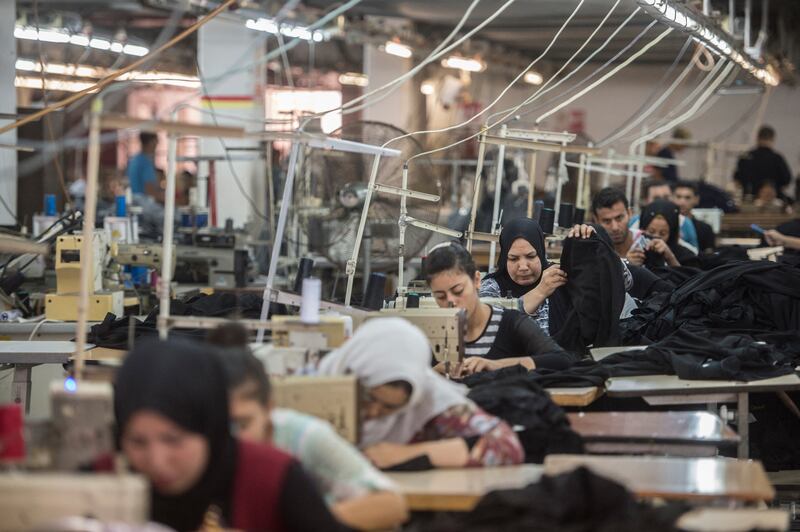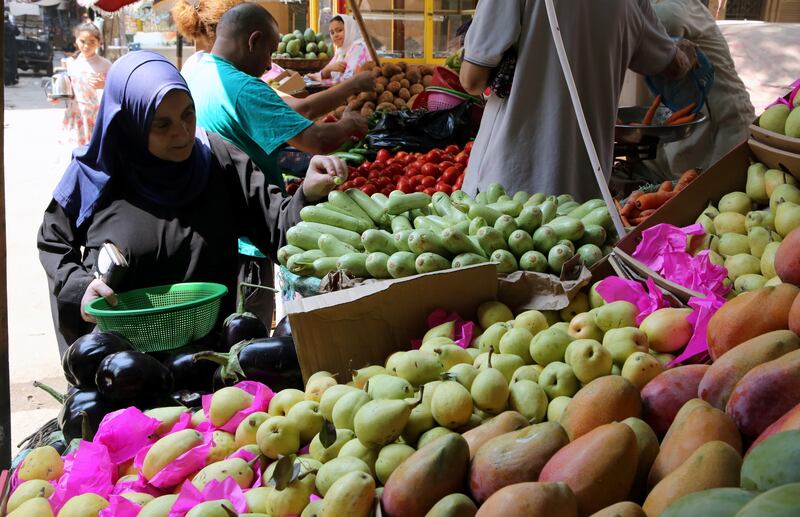The International Monetary Fund has raised its global economic growth forecast, with increased prospects of a soft landing this year, but risks remain amid slow and divergent economic progress as geopolitical uncertainty mounts.
The world economy showed resilience in the second half of last year, supported by private and government spending, improved labour participation and cheap energy and commodity prices, despite renewed geopolitical uncertainty, the Washington-based fund said in its latest World Economic Outlook report on Tuesday.
The multilateral lender expects the global economy to match last year’s 3.1 per cent growth in 2024 and improve slightly to 3.2 per cent next year.
The 2024 economic output projection is 0.2 percentage points higher than the IMF’s October estimates on account of greater-than-expected resilience in the US and several large emerging and developing economies, as well as fiscal support in China, the world’s second-largest economy.
“The clouds are beginning to part. The global economy begins the final descent toward a soft landing, with inflation declining steadily and growth holding up. But the pace of expansion remains slow and turbulence may lie ahead,” said Pierre-Olivier Gourinchas, director of research at the fund.
However, the IMF’s forecast for this year and the next is below the historical growth average of 3.8 per cent, reflecting restrictive monetary policies and withdrawal of fiscal support, as well as low underlying productivity growth, the report said.
The fund expects the pace of growth in the advanced economies to decline slightly in 2024 before rising in 2025.
Emerging and developing economies are projected to grow at a stable pace this year and the next, although the extent of growth is set to vary among different regions.
“Important divergences remain. We expect slower growth in the US, where tight monetary policy is still working through the economy, and in China, where weaker consumption and investment continue to weigh on activity,” Mr Gourinchas said in a separate blog on Tuesday.
“In the euro area, meanwhile, activity is expected to rebound slightly after a challenging 2023, where high energy prices and tight monetary policy restricted demand.”
Growth has also accelerated in several other economies including Brazil, India and some of the major economies in the South-East Asia region, the IMF said.
The global economy bounced back strongly from the coronavirus-induced slowdown but Russia’s continuing war in Ukraine and stubborn inflation have dented growth prospects.
Renewed geopolitical tension, including the Israel-Gaza war, as well as rising debt levels and the continued cost-of-living crisis in some emerging and developing economies are adding to headwinds.
To bring inflation down to their target range, central banks have kept interest rates high, affecting the pace growth.
The US Federal Reserve is expected to cut interest rates this year after increasing its benchmark policy rates since March 2022 to bring down consumer prices from a 40-year high.
Although the timing of the rate cuts is not clear, the projections released after the Fed's December meeting forecast three rate cuts this year in a push to bring interest rates down from 5.4 per cent to the target range of 4.75 per cent to 5 per cent.
Economic output in the US is projected to fall to 2.1 per cent in 2024, from 2.5 per cent in 2023. It is expected to decline further to 1.7 per cent in 2025, with the lagged effects of a shift in monetary policy, gradual fiscal tightening and a softening of the labour market.
The IMF’s growth projection for the world’s biggest economy this year is an upward revision of 0.6 percentage point from the October estimate, largely reflecting statistical carry-over effects from the stronger-than-expected growth outcome for 2023.
Growth in the euro area is expected to recover from the low base of 0.5 per cent in 2023, dragged down by its “relatively high exposure” to the war in Ukraine.
The Washington-based fund expects the bloc’s gross domestic product to expand by 0.9 per cent in 2024, a 0.3 percentage point downward revision, before growing 1.7 per cent in 2025.

The IMF expects the UK economy to expand by 0.6 per cent in 2024 as “the lagged negative effects of high energy prices wane”, before growing by 1.6 per cent in 2025.
The 0.4-percentage-point markdown to growth in 2025 reflects reduced scope for growth.
Output in Japan is set grow at 0.9 per cent in 2024 and 0.8 per cent in 2025, reflecting the “fading of one-off factors that supported activity in 2023, including a depreciated yen, pent-up demand and a recovery in business investment”, the fund said.
Growth in emerging markets and developing economies is expected to remain at 4.1 per cent in 2024, rising to 4.2 per cent next year.
The IMF projects that China's GDP expansion will hit 4.6 per cent in 2024 and 4.1 per cent in 2025, with an upward revision of 0.4 percentage points for this year.
“The upgrade reflects carry-over from stronger-than-expected growth in 2023 and increased government spending on capacity building against natural disasters,” the fund said.
Growth in India is projected to remain strong at 6.5 per cent in 2024 and 2025, underpinned by resilience in domestic demand.
Economies in the Middle East and Central Asian region are projected to rise to 2.9 per cent in 2024 and 4.2 per cent in 2025, from an estimated 2 per cent in 2023.
The fund has revised its GDP growth projection down by 0.5 percentage points for 2024 but 2025 estimates were raised by 0.3 percentage points.

“The revisions are mainly attributable to Saudi Arabia and reflect temporarily lower oil production in 2024, including from unilateral cuts and cuts in line with an agreement through Opec+, whereas non-oil growth is expected to remain robust,” it said.
Saudi Arabia, the Arab world’s largest economy, is projected to grow 2.7 per cent this year and 5.5 per cent in 2025, after contracting by an estimated 1.1 per cent last year, according to the latest IMF estimates.
Global headline inflation is expected to fall to 5.8 per cent in 2024 and 4.4 per cent in 2025 after hitting an estimated 6.8 per cent in 2023.
The global forecast for 2024 remains unrevised estimates given in October but is 0.2 percentage points lower for 2025.
Overall, about 80 per cent of the world’s economies are expected to have lower annual average headline and core inflation in 2024.
“Inflation is falling faster than expected in most regions, in the midst of unwinding supply side issues and restrictive monetary policy,” Mr Gourinchas said.
Geopolitical issues and the raging conflict in Gaza are threatening sharp increases in commodity and energy prices.
The conflict in Gaza could spill over into the wider region, which produces about 35 per cent of the world’s oil exports and 14 per cent of gas exports.
“Continued attacks in the Red Sea – through which 11 per cent of global trade flows – and the ongoing war in Ukraine risk generating fresh adverse supply shocks to the global recovery, with spikes in food, energy and transportation costs,” the IMF said.
“Container shipping costs have already sharply increased and the situation in the Middle East remains volatile.”
















